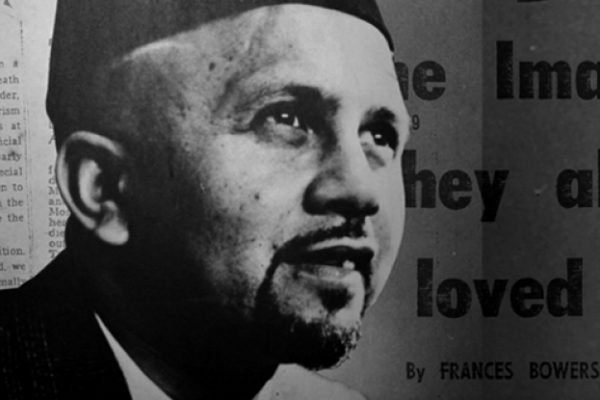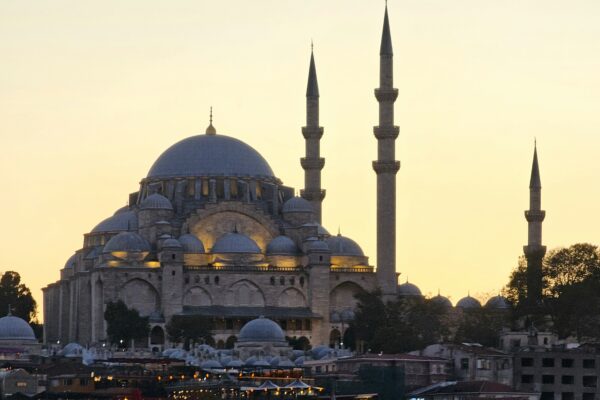It is increasingly clear that the reason that visuals from both Ferguson in 2014 and the current protests across America are so strikingly similar to the images that have emerged from American imperial adventures is that there has been a concerted effort across a range of presidential administrations to militarise the police.
It is increasingly clear that the reason that visuals from both Ferguson in 2014 and the current protests across America are so strikingly similar to the images that have emerged from American imperial adventures is that there has been a concerted effort across a range of presidential administrations to militarise the police.
Over the last few weeks, the world has watched as the United States responded to Black Lives Matter protests as though they were crushing an insurgency. Across all 50 states police in riot gear filled the streets, in parts of the country, President Trump mobilised the National Guard, and social media was filled with footage of police attacking those on the street indiscriminately, be they reporters, the elderly, or peaceful protestors.
As images of tanks rolling onto American streets and videos of police assaulting citizens found their way onto social media, US policymakers and the international community alike have drawn parallels between the scenes that have emerged in the US and America’s foreign wars. Senior Pentagon officials have desperately tried to draw a line between what is ‘appropriate in Fallujah’ and what is ‘appropriate in Farragut Square’ and much ink has been spilt expressing shock that images of riot police and heavy artillery depicted America and not Kabul or Baghdad.
However, the role of America’s militant foreign policy in this crisis extends far beyond an analogy included in tweets and opinion pieces for an added shock value. The manner in which the US deals with ‘threats’ abroad has been presented not as an issue for the average American citizen, but in defence of that same citizen’s freedom. Now, it is increasingly clear that two decades of an aggressively militant foreign policy has done very little to preserve their rights of the average American, and instead has facilitated the largest domestic expression of state-sanctioned violence in decades as well as laying the groundwork for a curtailing of human rights within a legal framework.
Suspension of Civil Liberties
In the wake of 9/11, the United States began to revive the ‘Us vs Them’ narrative that had underpinned its foreign policy throughout the Cold War. By the time the War on Terror was underway, America had made it clear that you were either with the US or against it. Being ‘against’ the United States of America, either by virtue of the colour of one’s skin, their faith, or their actions was considered a threat, a threat that always warranted a violent response.
In the years following 9/11, this played out across the Muslim world, with the United States Armed Forces partaking in countless human rights abuses across the region, however, nowhere was this more apparent than in Iraq. Operation Iraqi Freedom, ironically enough, led to the mass incarceration, torture, and illegal detention of Iraqi citizens in prisons like Abu Ghraib and countless other similar sites within Baghdad’s Green Zone. Faced with an insurgency where they had blindly expected gratitude, American forces cast a wide net, raiding villages and homes on a daily basis and detaining men and children without ever giving them access to a trial.
During the 2003 insurgency, human rights groups across Iraq claimed that security detainees had no rights; none of them had lawyers and the vast majority were denied visits. For all intents and purposes, the scale of the insurgency was used a pretext to allow these violations of human rights and set up a framework that allowed for excessive use of force and unlawful detention in times of crisis.
As the recent protests gained traction across all 50 states, America once again found itself in crisis, this time at home. As those who witnessed the events in Ferguson or, in fact, any major protest in US history will confirm, these protests were not the first time that American police had responded with disproportionate force to a protest movement. However, in this case, the use of force was accompanied by the curtailing of civil liberties within a legal framework.
Citing the ‘crisis within a crisis’ of widespread protests against the backdrop of the Covid-19 epidemic, New York City Criminal Court James Burke suspended habeas corpus. In practice, this allowed the NYPD to indefinitely detain protestors who violated the now-cancelled curfew as ‘extreme measures’ were needed to maintain order in the wake of the ‘rage against the police department’.
Immediately after this ruling, social media was awash with stories of protestors being detained for more than three days at a time by the NYPD. Detainees have described experiences of being held in cells filled with up to 40 people where social distancing was an impossible task and being refused water as well as their right to a phone call. The NYPD has refused to disclose arrest figures and detainees were often given no information as to when they could expect an arraignment. Despite human rights groups gathering outside these locations, detainees were unable to access legal representation as the detention of large numbers of protestors was carried out within a legal framework.
A close look at Washington’s response to what has by and large been peaceful protests highlights that the ‘Them vs Us’ mentality that has characterised US foreign policy for the last two decades has found a new footing domestically. When the US finds itself in times of crisis, civil liberties can easily be dispensed with and although this outlook gained traction in the context of America’s foreign wars, this model is increasingly being applied at home.
Militarisation of the Police
The Bush administration’s invasion of Iraq and the Trump administration’s repeated attempts to provoke conflict with Iran is indicative of a foreign policy that simply cannot function without war. The consequences of this on the world stage is well documented, however, the manner in which this phenomenon has turned inwards has largely been unexplored.
The insistence of the Trump administration to deploy the military to counter the ongoing protests demonstrates that Washington now deals with domestic dissent in the same heavy-handed manner it has dealt with sovereign states that refused to acquiesce to America internationally. The call to bring in the National Guard to quell disquiet were not just made at the very top of government but were also echoed in the media. Senator Tom Cotton’s controversial opinion piece in the New York Times titled ‘Send In the Troops’ where he calls for ‘an overwhelming show of force’ against protestors is indicative of a country that has spent so long utilising the military to extinguish opposition to US global hegemony that it is no longer able to react to dissent proportionally, even within its own borders.
The militarisation of domestic security services is by no means restricted to rhetoric. From 1997 onwards, America embarked upon a number of projects designed to militarise the police, the most significant of which was the Pentagon 1033 programme. This initiative allowed law enforcement agencies to obtain ‘excess’ property from the Department of Defence, ranging from machine guns and armoured vehicles to grenade launchers.
In the decade after 9/11, states received at least $34 billion in federal grants to purchase military-grade supplies and even in remote cities, police officers began to travel with military-style assault rifles in their patrol cars. The link between the militarisation of the police and the increasing civilian death toll is unequivocal. A 2017 study analysing spending by the police department in relation to police-involved fatalities concluded: “When a county goes from receiving no military equipment to $2,539,767 worth (the largest figure that went to one agency in our data), more than twice as many civilians are likely to die in that county the following year.”
It is increasingly clear that the reason that visuals from both Ferguson in 2014 and the current protests across America are so strikingly similar to the images that have emerged from American imperial adventures is that there has been a concerted effort across a range of presidential administrations to militarise the police. Although the repression of black communities in the US has been a feature of US domestic policy long before America’s War on Terror, the scale of the violent repression of protest movements that had emerged in the wake of the killing of Michael Brown and the current protests sparked by the killing of George Floyd was facilitated in no small part by America’s extensive experience in crushing dissent abroad.
The Arms Trade
The arms trade has been one of the defining features of the West’s interactions with the developing world and despite the devastating consequences of the industry, has been allowed to progress largely unchecked. In 2019, UK arms sales to repressive regimes increased by 300% compared to 2018 and until July last year when the Court of Appeal ruled that UK sales to Saudi Arabia were unlawful, $6.4 billion worth of UK arms have been sold to Saudi Arabia and their coalition partners fighting in Yemen.
According to various Human Rights groups, five years of sustained Saudi attacks on hospitals and schools coupled with an increasingly dire healthcare situation has brought Yemen to the brink of extinction. Despite this, both the US and UK have continued to export arms to Saudi Arabia, with Boris Johnson famously claiming that if the UK didn’t sell to the Saudis, someone else would.
The revelation that rubber bullets and tear gas being used by US police again protestors were exported to America by the United Kingdom sparked widespread anger across the UK, with petitions to suspend the UK export of tear gas, rubber bullets and riot shields to the United States being signed by upwards of 797,445 people. While the anger that this has sparked is entirely legitimate, the UK’s slow response to the issue and, given America’s history of violently repressing protest movements, that the UK engaged in the sales of these arms in the first instance is unsurprising.
In their roles as first and second-largest arms exporters respectively, the US and UK have consistently demonstrated that when it comes to the developing world, profit trumps human rights. Now, with unrest moving into the West the leaders of the Free World have shown conclusively that this principle will be upheld domestically.
Conclusion
By and large, the White House has promoted the narrative that foreign policy and domestic policy are separate entities, overlapping only in the sense that an aggressive foreign policy serves to protect the freedoms afforded by the state domestically. This narrative gained credence during America’s War on Terror, where the use of rhetoric surrounding the ‘Muslim World’ persuaded the American public that the US-led assault on civil liberties and human rights in Iraq and Afghanistan and images of US tanks rolling into cities were happening a ‘world’ away. The issues that arise here are two-fold.
First and foremost, the manner in which America’s rampage across the Global South has been dismissed is a testament to how many have perceived human rights as a luxury that can only be afforded to those who live in the West. Secondly, our failure to hold our governments to account on their actions abroad means that even holding up these rights domestically has become impossible. Police brutality against black communities is by no stretch of the imagination a new phenomenon and the repression of these communities in America predates US involvement in the Middle East. However, two decades of an increasingly aggressive foreign policy has set the stage for the militarisation of the police on an unprecedented scale and the ease with which Western occupying forces have been able to erode human rights abroad has set the stage for an increased curtailing of human rights at home.





